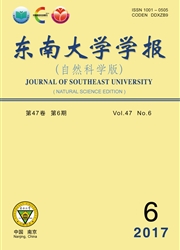

 中文摘要:
中文摘要:
基于珠江黄埔大桥结构健康监测系统为期一年的温度监测数据,详细分析了北汉斜拉桥和南汊悬索桥扁平钢箱梁的温度分布特性.采用统计学方法建立了钢箱梁顶板和底板温度以及顶板和底板竖向温差的概率分布模型,确定了具有一定重现期的钢箱梁温度和竖向温差标准值.分析结果表明:钢箱梁横截面温度分布具有对称性,并且顶板与底板之间存在较大的竖向正温差;钢箱梁顶板和底板温度均可以通过2个正态分布函数的加权和来描述其概率分布,顶板和底板竖向正温差则可以通过2个Weibull分布函数的加权和来描述其概率分布.在此基础上分别计算了重现期为50年的钢箱梁温度和竖向正温差标准值.研究结果可为我国温热地区的大跨钢箱梁桥全寿命设计提供参考.
 英文摘要:
英文摘要:
Based on one-year temperature monitoring data that were recorded by the structural health monitoring system instrumented on Pearl River Huangpu Bridge, the temperature distribution charac- teristics of the steel box girders for the north cable-stayed bridge and south suspension bridge are ana- lyzed in detail. Using statistical methods the probability distribution models for the temperatures of top plate and bottom plate and vertical temperature differences between top plate and bottom plate are established, respectively, on this basis the standard values of temperatures and vertical temperature differences with a certain retum period are estimated. The analysis results reveal that the transverse temperature distribution of steel box girders is symmetrical, and there exists dominant vertical tem- perature difference between the top plate and bottom plate. The temperatures of top plate and bottom plate can be described by the weighted sum of two normal distributions, and the temperature differ- ences between the top plate and bottom plate can be described by the weighted sum of two Weibull distributions. The standard values of temperatures and vertical temperature differences with a return period of 50 years are further obtained. These research results provide references for the life-cycle design of long-span steel box girder bridges in tropical regions.
 同期刊论文项目
同期刊论文项目
 同项目期刊论文
同项目期刊论文
 Fatigue monitoring and analysis of orthotropic steel deck considering traffic volume and ambient tem
Fatigue monitoring and analysis of orthotropic steel deck considering traffic volume and ambient tem 期刊信息
期刊信息
